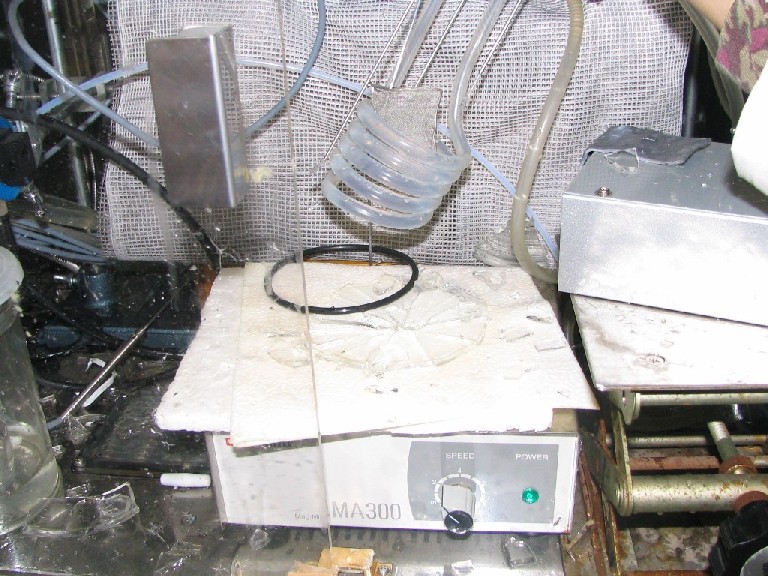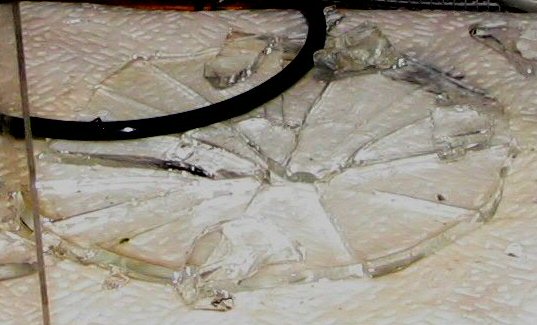|

Jed Rothwell describes this photo: "The object in the left foreground is the Pyrex safety door on the incubator, and the handle on the door. In the middle of the photo the mesh anode and the cooling tube are clearly seen. I am not sure where the black rubber sealing ring on the bottom came from. I believe the remains of the glass funnel are poking out of the top of the black rubber stopper, and one shard of glass below the stopper is also from the funnel, I think. The insulated tube on the top right is the condenser."
For more figures and sketches about this configuration and
information about Mizuno's work, Rothwell suggests the following
paper:
http://lenr-canr.org/acrobat/MizunoTgeneration.pdf
|
|

Radial fracture pattern of the bottom of the flask.
Commentary by Horace Heffner:
"It appears the explosion may well have been ignited in the
flask, but the main energy from the explosion came from the top
interior of the Yamato 1L-6 incubator. It looks like the
explosive force was primarily downward, and the overpressure on
the conical cap on the flask blew the flask apart in radial
directions, leaving the base cracked but in leaving it place. It
looks like the base of the flask may be stuck (by prior heating)
to the polypropylene insulation underneath it.
Assuming the plastic door was not blown to pieces, the
overpressure was clearly enough to blow open the plastic door
before the glass shards went through the open door. This
indicates the overpressure hit the door before the flask pieces.
The source of the blast pressure that opened the plastic door
was therefore not inside the flask, but rather probably coming
from the top of the 1L-6 downward.
One has to wonder if there was a long run at a somewhat
earlier time, but not more than a few days prior to starting the
demonstration for the visitor. From the pdf experiment
description it appears the hydrogen from the flask is ultimately
dumped into the interior of the 1L-6, even if/when the generated
gas volume is being measured. There are clearly various spaces
in the 1L-6 that could trap an H2-O2 mixture, even if the door
were opened for a while for access to the experiment. Upon
closing the plastic door and leaving the experiment sit, any
residual H2 in semi-confined spaces (e.g. cloth, instrument
boxes, etc.) in the 1L-6 would eventually tend to diffuse toward
the top of the 1L-6."
|

